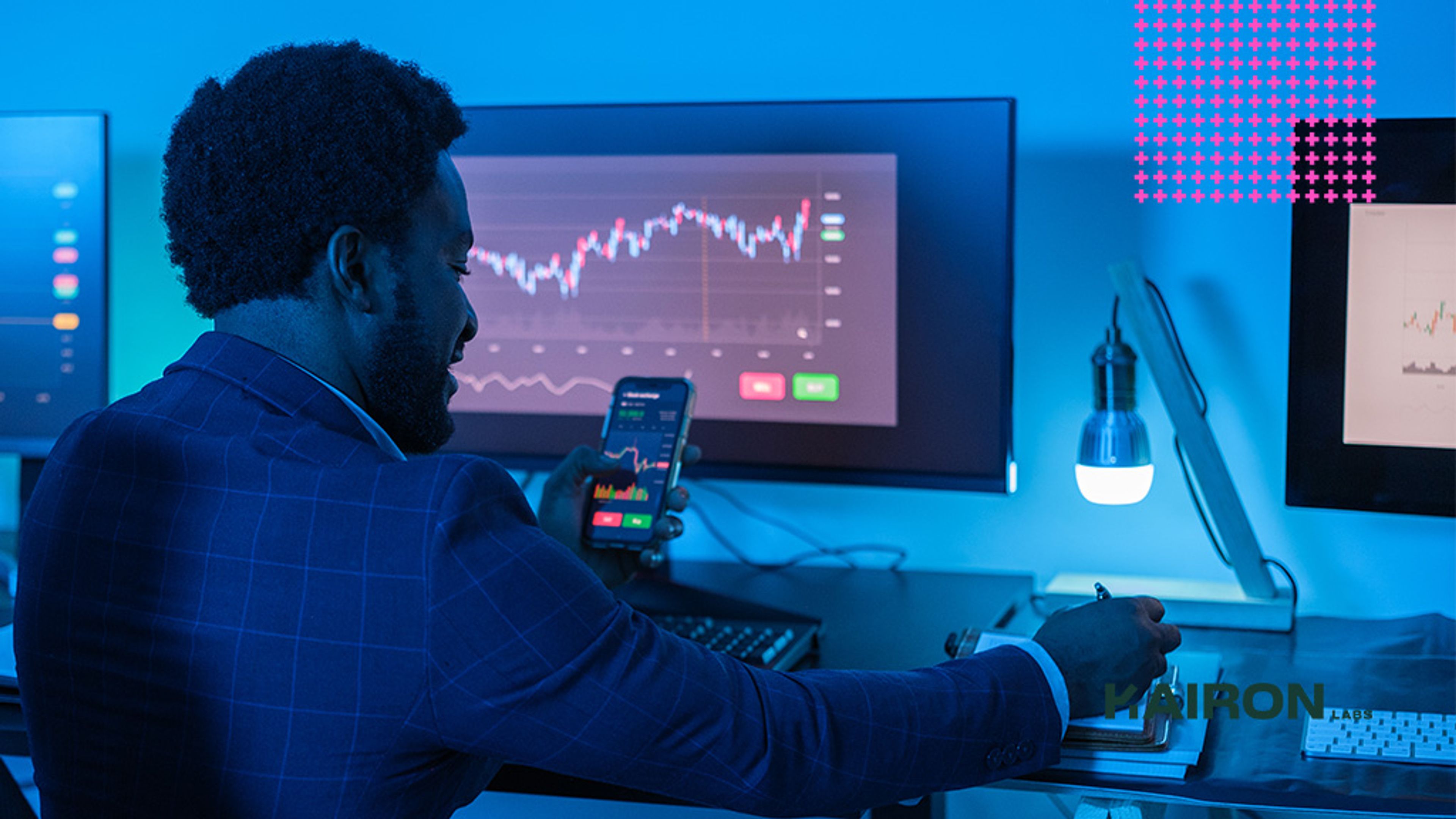
The Ultimate Checklist for Cryptocurrency Trading [2022]

There’s more to cryptocurrency trading strategies than buying the dip. With the latest Web 3.0 developments and more exciting crypto projects being launched, numerous traders have started to approach crypto assets as an opportunity to increase their capital.
Yet, tempted by high-reward trades and glamorous success stories, many of them disregard the risks and set forth without a clear plan in mind, counting on gut feelings or community rumors to guide them. In a market with high volatility and a complex mix of factors affecting price movements, that approach is the sure recipe for liquidation.
We want to make sure your trading journey stays profitable in the long term. That's why we've put together a checklist with all the steps you need to know to make the right trades at the right time without getting sidetracked by emotions or groundless speculations.

7 key steps to follow when trading cryptocurrencies
Although there are no guaranteed gains in the crypto trading arena, you can follow a couple of steps to turn trading opportunities to your advantage while limiting risks.Here’s everything you need to know about trading cryptocurrencies like a pro:
1. Have a cryptocurrency trading strategy in place and stick to it
A cryptocurrency trading strategy is a framework that will help you determine your trading objectives, assess your risk tolerance and improve your risk management skills. Think of it as a set of guidelines that will help you stay accountable for your actions throughout the ups and downs of a market cycle.
You can start building your trading strategy one step at a time by looking at your portfolio’s crypto asset allocation, position sizing, entry and exit indicators per asset, investment amount as a percentage of total capital, and the stop-loss and take-profit levels. Regardless of your trading strategy and the cryptocurrency trading platform you use, you should always know why you take a certain trade and what your edge is on that particular trade.
If you take a trade based on the simple fact that it’s going up or down, you’ll most likely end up losing your money. When you don’t have clarity on what’s happening in the market and get swayed by other traders’ speculations, you’re unable to make sound decisions. That’s also why we don’t recommend copy-trading influencers on Twitter.
2. Choose the trading style that matches your experience and risk tolerance
No one is born a day trader, and few can handle the stress of trading on margin. Therefore, depending on how long you’ve been in the crypto market and how well you can understand and use various data to capitalize on price movements and trends, you’ll need to choose your trading style. Having said that, we believe a quick recap of the main cryptocurrency trading styles is in order.
- Day trading: an active trading strategy where traders hold positions only for a day and rely on technical analysis indicators to capitalize on short-term price fluctuations
- Swing trading: a medium-term trading method based on profiting from market swings that take from a few days to several weeks to play out
- Spot trading: a beginner-friendly trading style that focuses on buying and selling cryptocurrencies at the current market price for short-term gains
- Margin trading: a high-risk strategy that involves borrowing funds from a third party to open leveraged trading positions and generate higher profits
- Scalping: a short-term, advanced trading style that involves holding positions for minutes or even seconds to profit from price movements in a highly volatile market
Once you’ve found the trading method that works for you, you can think of your trading strategy in multiple timeframes and compound on that. Use these timeframes to accumulate more coins you have a long-term vision for (e.g., ETH) in the bigger market cycle to compound gains.Until now, the name of the trading game in the crypto world has been to use altcoins to accumulate more Bitcoin and shift to stablecoins when Bitcoin increases in dollar value. While that remains valid, the game strategy has gradually switched to accumulating more ETH through NFTs and altcoins and selling ETH when your long-term thesis plays out.
3. Beware the FOMO to avoid crypto scams and protect your investment
The Fear of Missing Out (FOMO) on a trading opportunity can make you abandon your trading strategy and jump into positions without considering the real value of an asset or knowing the current narrative being played out. The hype created around a cryptocurrency on social media, Reddit subs, and Telegram trading groups can make many throw caution to the wind and trade blindly.
Nevertheless, we suggest you take a step back and do your own research (DYOR) before placing a trading order. There’s a reason why the crypto world is called a ‘Wild West’.
Some projects might promise the moon to enthusiastic traders and investors only to be revealed as cryptocurrency scams, such as the infamous rug pulls. Spotting these requires you to think critically and double-check the information you have about an asset or project before making a decision.What you should keep in mind at the end of the day is that you shouldn’t feel pressured to trade.
Everybody can make money in a bull market when moods ride high — even your neighbor next door may outperform you while knowing nothing about risk management. However, while making money is easy in crypto, keeping it is a different story. After a large trend, taking no trades for multiple weeks until the market becomes clear again can be a good strategy to protect your capital.

4. Start working on your risk management skills
Cryptocurrency trading presents amazing opportunities to increase your wealth but also high risks that could bring steep losses. That’s why you should assess your risk tolerance as a trader before entering a position. As a basic trading rule, we recommend you never invest more than you can afford to lose on a trade. Here are a few trading risk management strategies you can implement to limit losses while growing your crypto portfolio.
- Use the 1% trading rule
Mainly used by day traders, this rule is meant to help limit losses in a highly volatile market. The 1% trading rule suggests that you shouldn’t risk more than 1% of your trading capital on one single trade. As such, you can trade with 1% of your portfolio value per trade or with a bigger order and a stop-loss order equivalent to 1% of your portfolio value. You can also size up or down depending on how high your belief is in a particular trade and what you think the expected value (EV) of that trade will be.
- Set up stop-loss and take-profit orders
Stop-loss orders allow traders to plan their exit strategy ahead of time and minimize their losses when the prices decline. Meanwhile, take-profit orders enable traders to lock in their gains by closing their position when the price of an asset hits a favorable target. Both stop-loss and take-profit levels have to be set before you enter a position and can help you avoid making emotional decisions during market fluctuations.
- Diversify your portfolio
By diversifying your portfolio, you get exposure to different crypto projects and asset classes, thus minimizing the operational and systemic risks that come with having a large percentage of your portfolio invested in just one asset. A diversified portfolio with investments in altcoins, stablecoins, liquidity pools, derivatives, and even NFTs can offer protection if a certain crypto asset undergoes a sudden slump.
5. Avoid emotional decision-making
Since the crypto market is defined by higher volatility and risk compared to traditional investments, you need to keep your emotions under control to avoid trading on impulse when market conditions shift. Trading is all about decision-making. Remaining calm and rational during uncertain times instead of giving in to the market’s opinions and fears is a crucial skill you’ll need to succeed.
While managing one’s emotions can take a bit of practice, relying on a predetermined strategy can prevent fear or greed from impairing your decision-making when trading cryptocurrencies. A robust cryptocurrency trading strategy will allow you to avoid rash decisions by approaching your trades calmly and methodically. Moreover, it will help you shift your focus to relevant data and determine which entry or exit positions best align with your trading goals.
6. Get used to taking small losses instead of HODLing your crypto
If the number one reason for losing money in crypto is margin trading, then number two is bag-holding altcoins. Some traders fail to understand there’s nothing wrong with taking a trade and getting out fast for a small loss when it doesn’t work out. Try not to let your ego and emotions keep you stuck holding a sinking coin until it hits zero.There’s always another pump to ride, so you should protect your capital for when an opportunity is there and not lose 90% of it before that moment arrives.
That also directly brings us to the next point of taking trades and getting them right. While making profitable trades is essential, the most important thing in trading remains capital management. Your position sizing should always reflect your conviction in the trade. Thus, if everything went up a million percent, you should be able to notice this shift and understand it’s time to adjust your position sizing. There’s a time to be all in, and there are times when you should gradually stack up stablecoins to take risk off the table.

7. Understand that cryptocurrency trading is a long game
One of the things that people don’t factor into their decision-making when it comes to trading is that surviving at all times should be your number one priority. The future EV of potential returns in the crypto market is large despite momentary price downturns. You shouldn’t let the possibility of achieving large profits in the shortest amount of time overshadow the importance of playing the long game.In the long term, it doesn’t matter if you entered your first cycle late and didn’t make the 100x or 1000x gains you expected to make.
Yet that doesn’t mean you should force trades in the hope of making life-changing money. Opportunities like that are scarce. By the time the market has gone 10-100x, the likelihood of it being gone already is high. Not to mention, it can take a long time before the full cycle resets and all the scams are washed out to find trades worth entering.
Blowing up during a bear market (or even during a bull market) will not only cause you to lose your stack but will also leave you with a world of pain. By that, we mean you’ll also pay the opportunity cost of not having the capital to accumulate at the depths of the bear market. So keep developing your skills and build up your base slowly by minimizing your risks instead of going full steam ahead.
Then, when the next bull cycle starts, you’ll be ready to ride the uptrend.Don’t miss out on our weekly macro market updates for more insights into the evolution and direction of crypto assets. If you have questions about cryptocurrency trading or seek expert advice for a crypto project, reach out to us! We’re here to help you! (co-author: Joshua Van de Kerckhove)
Kairon Labs provides upscale market-making services for digital asset issuers and token projects, leveraging cutting-edge algorithmic trading software that is integrated into over 100+ exchanges with 24/7 global market coverage. Get a free first consult with us now at kaironlabs.com/contact
Featured Articles


What Is Bitcoin Halving and How to Prepare For It

Bitcoin Halving Aftermath: Post-Halving Trends to Expect

Most Anticipated Retrodrops and Airdrops in 2024

Crypto Bull Run Hottest Altcoins: Meme Coins, GameFi, AI

Launching a Token 101: Why is Liquidity Important?
